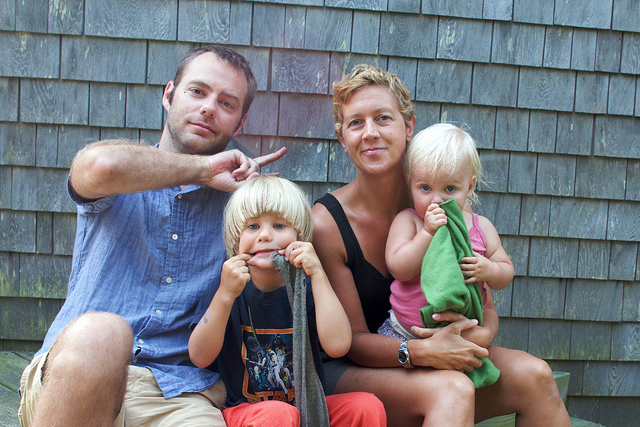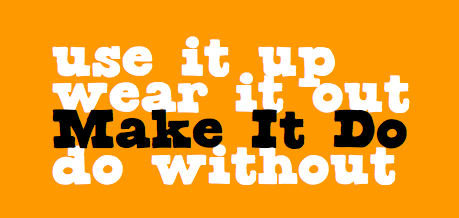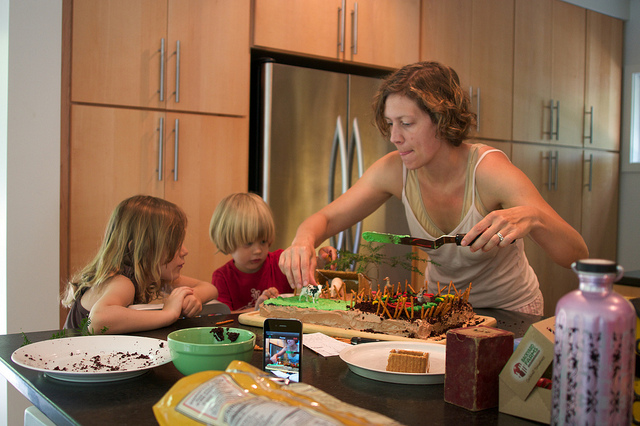Make It Do: A Year of Buying Only What I Need
by Wen Lee | March 14, 2012

“In 2012, I'm not going to buy anything except what I've used up or worn out. For all else, I'll make do with what I already own or I'll do without.”
This was Meg Hourihan’s 2012 New Year’s resolution. She considered making it an experiment for just a couple of months, but realized that would only defer purchases. If she really wanted to experience a new lifestyle, she would have to do it for the full year.
And so her Make It Do project was born. In 2012, Hourihan is living under four guiding principles:
- Use it up: Only replace things after you use them up (e.g., food, toiletries, makeup).
- Wear it out: Don't buy new clothes or products unless they fall apart and cannot be mended.
- Make it do: Live with (and be content with) what you have.
- Do without: Don't go beyond your means, and borrow things when you need to.
Make no mistake, Hourihan is no reclusive minimalist living in a yurt. She lives in New York City with her husband and two young kids. She spent years as a web entrepreneur, co-founding popular websites such as Blogger. She loves skiing, enjoys cooking, and (as she realized recently) owns about 26 pairs of shoes.
“I’m not comfortable with how easily I spend money and buy things on impulse, simply because I have the luxury to do so. This is a project to see what happens when I use what I have, for a year.”

Hourihan grew up in New England with what she calls an old-time “Yankee-ness” way of life. Her grandparents lived through the Depression and would time her showers and remind her how much it cost to heat water. Her grandmother would even save Hourihan's cereal milk for her to drink with lunch if she didn't finish it at breakfast.
“‘Sustainable’ wasn't the term when I was younger, but it's something I've always been aware of, and pretty interested in.... I feel like I had more of an anti-consumerist philosophy when I was younger (and poorer) and somehow just got away from that over the years. So I see this project as a personal consciousness-raising, a way to reconnect with a former version of myself perhaps, and to step back from a typical 21st-century urban lifestyle.”
Now into the third month of her project, Hourihan has found herself buying less, sitting at her sewing machine more, using up food at the back of her pantry, and even trying to figure out how make her own saline solution. She chronicles her experience regularly on the Make It Do blog. Her recent posts include resisting an online deal for skinny jeans, deciding whether to have her kids "make do" too, and a new awareness of just how hard it is to escape consumerism in the city. Quarterly, she will evaluate her spending and compare it to previous years to see how much money she saves.

With the average American consuming far more than our fair share (we make up just 5 percent of the world's population but use 30 percent of the world's resources), a Make It Do campaign could certainly be beneficial nationwide. But while Hourihan’s yearlong experiment may inspire others to downshift and rethink the American way of life, she is not trying to change the world.
“I think there's something totally screwed up with a system that requires us all to live beyond our means to keep it functioning, but I'm not ready to lead the revolution quite yet. If other people are inspired and want to do it, I think that would be awesome. Right now it's really a project for myself, to see if I can do it, and to see what happens to me during the experience.”
Follow Hourihan's Make It Do project at makeit.do, and her personal blog at megnut.com.

